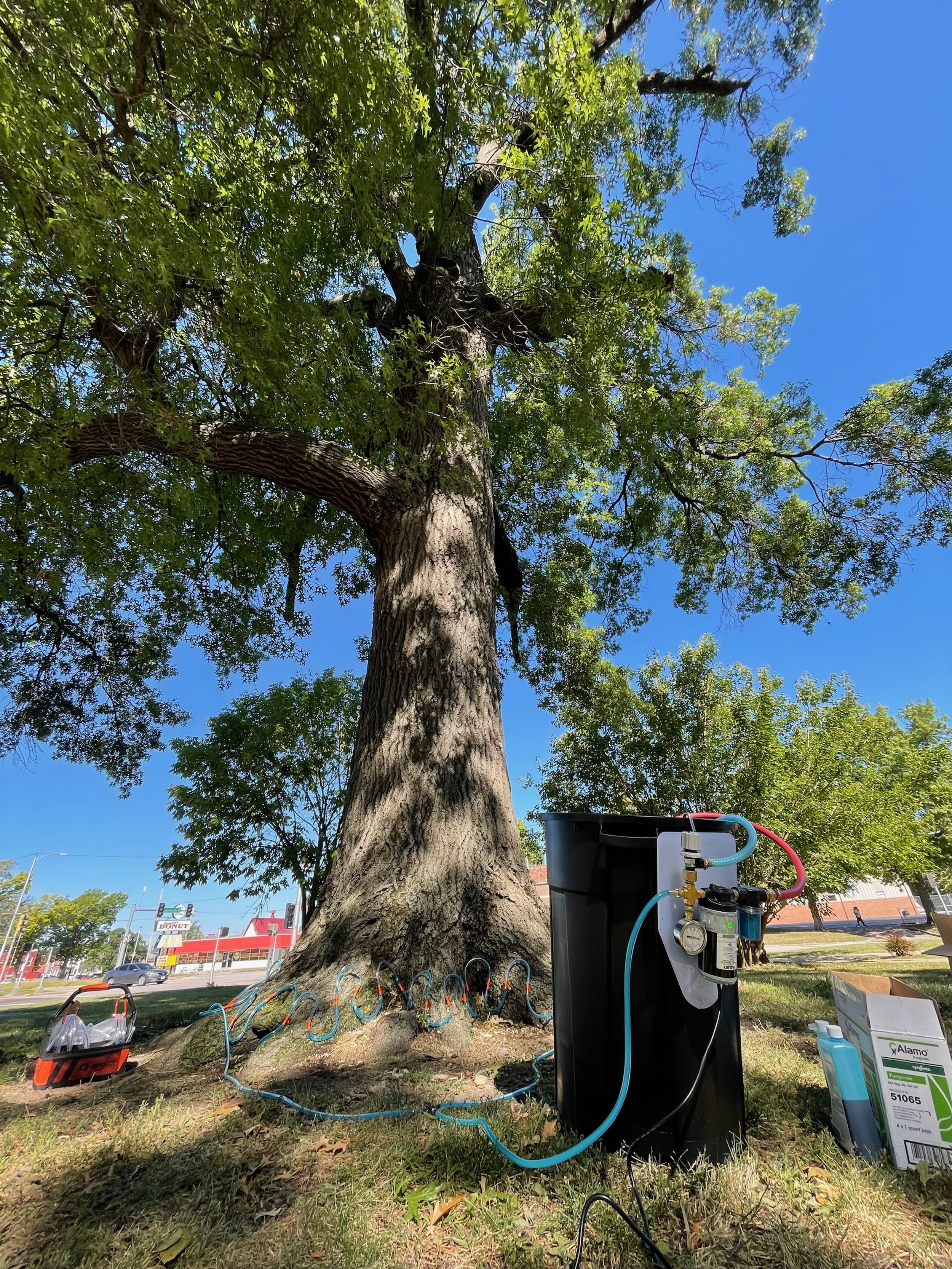Fall is right around the corner, and it is a busy time of the year for caring for trees. With cooler temperatures and rain expected to come it is a great time of the year to prune, plant, and prep your trees for winter. There are also several pests and problems where fall is the best time to treat them. This article will point out a few of the things that you should consider reaching out to us to help you with.
Iron Deficiencies in Oaks: Oak trees are very often seen in early spring with very yellow leaves. This is a problem called chlorosis. This is caused when the pH in the soil gets too high, often from the fertilization of lawns, oak trees then cannot pick up the available iron in the soil and their leaves will turn yellow making them more susceptible to infection from other disorders. To mitigate this we do several things, first we take a soil sample to see where your soil’s pH is and plan to balance the pH with soil amendments. Depending on severity of the chlorosis, we then inject the tree with iron, which is best done in fall, to solve the short-term iron deficiency in the tree. If your oak tree’s leaves were yellow this spring or if they are still yellow, please contact us and we can help fix this before it gets much worse.
Fruit Tree Pruning: Most online guides will tell you to prune your fruit trees in winter because winter is when the trees do not have leaves which makes it easier to see the tree’s structure and prune to improve it. In my experience, this guideline is good general guidance but is not optimal for your specific tree or the specific pruning you may be planning. If you are wanting to reduce your tree’s height or are pruning a stone fruit (peach, plum, cherry, or another fruit with a pit), you should be pruning your tree in fall after it has dropped its fruit. I find that doing this will reduce the number of reactionary new shoots and new growth in the spring which are more susceptible to disease infection than older growth. If you are planning some fruit tree pruning this winter (you should because fruit trees should be pruned every year), please reach out to us and we can let you know if fall pruning makes sense in your case.
9/10/2024 - Chris Rippey - ISA Certified Arborist
Last Chance for Emerald Ash Borer and Oak Wilt Injections: If you have an ash or oak tree, you should know about Emerald Ash Borer and Oak Wilt. These are two common disorders that will kill your tree and can be controlled if identified and treated early. Fall is your last time of the year to do this as both disorders are treated with injectable fungicides or insecticides and require leaves on the tree for the injection process to work. The reason we like treating these disorders in fall is because both disorders are very active in early spring and if you do not get the insecticide or fungicide in the tree in fall, it is not in the tree in early spring and the disorder’s unprotected early spring movement could end up kill the tree. If you have an oak or ash tree, please reach out and we can assess your tree and let you know if treatments make sense.
Tree Assessments: Fall is a great time to schedule an assessment for your tree. With the leaves still on the tree, an Arborist can still see any foliar issues and recommend treatments that usually occur in the spring. It is also a great time to have an Arborist check out your tree before storm season fully arrives and they can recommend care measures to make your tree more wind firm.
Tree Planting: Fall is the best time of the year to plant a tree. This is because if you plant in fall, you will get all the nice wet weather of fall and winter for your tree to get established before next year’s dry season. You can also get great discounts on plants as many nurseries are trying to sell unsold stock before winter. If you need help finding the right tree for your site, please reach out and we can provide you with a free list of appropriate trees for your site.






